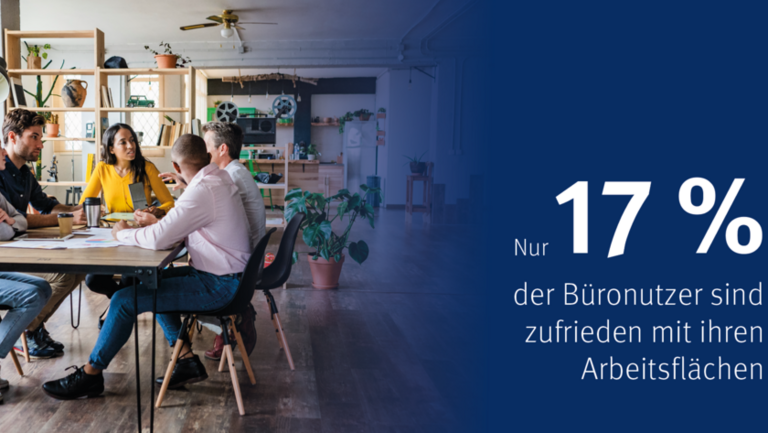The responses from almost 230 office workers and HR employees of all age groups and genders, from a range of sectors, provide an up-to-date picture of the feelings of those surveyed. What requirements and demands does the working environment need to meet? Do services play a part and if so, which ones? How important is home office or intelligent building control? Thomas Häusser, partner at Drees & Sommer and co-initiator of the study, explains why user requirements must be taken seriously: ‘Especially in times when there is a shortage of skilled workers, companies have to stand out positively from their competitors. If employers want to increase employee loyalty and satisfaction, they need to start at this point and re-design the relevant space. This is not necessarily associated with high investment costs or a lot of technology. Much less costly factors – such as brighter rooms, quiet zones or individual air-conditioning –often help.’
Respondents Would Like The Living Room Brought Into The Office
The analysis reveals a disquieting result: only 19 percent of those surveyed enjoy going into their office; just 17 percent associate their workplace with satisfaction.
This contrasts with the other side of the coin: negative emotions such as tension, hectic pace, discomfort and frustration. Even particularly negative forms such as revulsion and depression are mentioned. This also has a negative impact on productivity in the long term. A homely ambience in the office holds out the promise of improvement: appealing colors, furnishings and decoration, effective individually-controlled air-conditioning, quiet rooms, massages, relaxation facilities and catering – all these things boost well-being. In these areas, however, respondents still see a lot of room for improvement in their own offices: only three percent said they felt at home in their office. In addition, employees attach importance to a range of services.
If the workplace offers a staff restaurant, fitness or health facilities, for example, satisfaction also increases. Since the majority of office workers would like to see a homely atmosphere, employers and landlords must create living environments instead of working environments and have the courage to introduce changes.
Office As The Mood Takes You: Variety Is Everything
The quality of the space remains a more important factor than the services offered. An attractively designed working environment also has a positive effect on staff retention. Whether space with a café look, in a living room style or for highly focused work: for 86 percent of users, differently designed work environments in the office increase productivity. A quieter working atmosphere and more light can also contribute to this. Only four percent of those surveyed who believe that they can work more productively in other environments rate workstations in their private homes as such an environment. In the office, staff members appreciate the personal dialog with colleagues. For employers, therefore, the option offered to employees to work in their private homes is not an appropriate argument in favor of reduced space. Instead, respondents anticipate an increase in project workspaces and open space environments in the office.
Christian Krauss, Head of User Experience Art-Invest Real Estate Management GmbH & Co. KG; Thomas Häusser, Partner at Drees & Sommer SE; Marko Bohm, Managing Director responsible for Real Estate Management at STRABAG Property and Facility Services GmbH; and Ralf Hempel, Chairperson of the Management of WISAG Facility Service Holding GmbH jointly initiated and organized the Office User Monitor 2025 study. The results gained will be used for further analyses.
